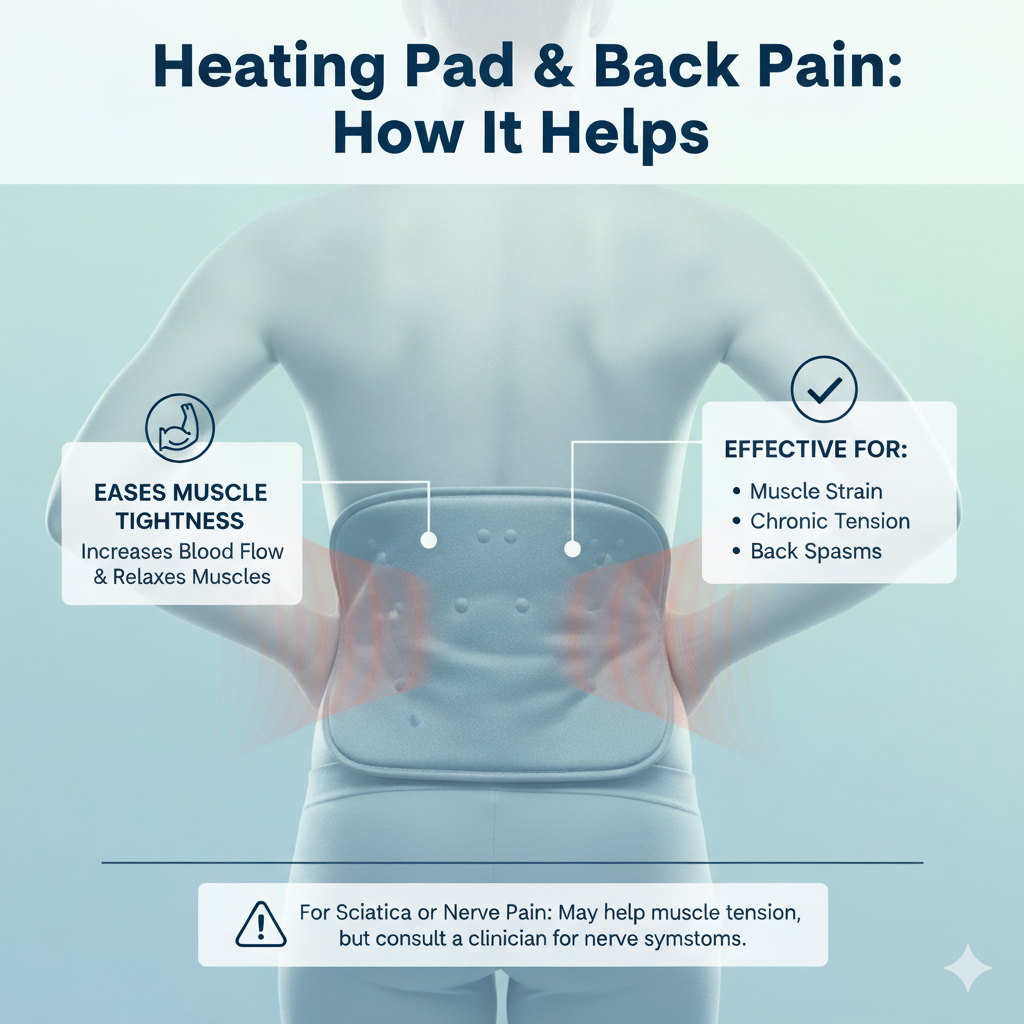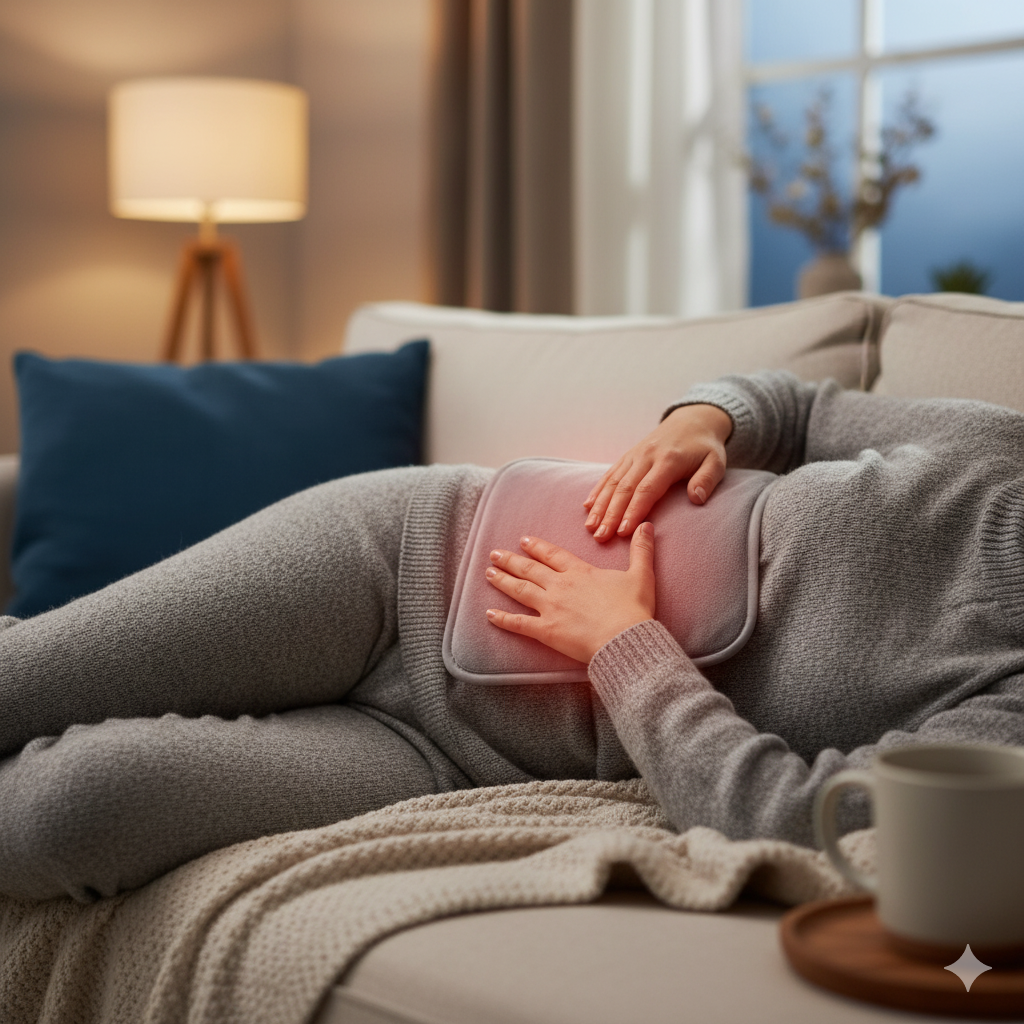A heating pad can ease muscle pain fast. Use it for back pain, neck pain, or sore spots. It brings heat to tense tissue. Heat relaxes muscle and improves blood flow. Below is a clear, safe guide. Follow it step by step.
What a heating pad does?
- Heat relaxes tight muscles.
- Heat reduces stiffness.
- Heat boosts circulation.
- Heat eases spasms and soreness.
Types of heating pads
- Electric heating pad comes with plug ins, allows users to set temperature. (Good for steady heat.)
- Microwavable heat packs / heat cushion, users warm in microwave. (Portable.)
- Moist heating pad adds steam for deeper heat.
- Infrared/ceramic pads deeper heating without high surface temp.
Common uses
- Heat pad for sore back for general ache.
- Heat pads for back ache relieve chronic or acute pain.
- Heat pad back spasms relaxes tight spasms.
- Neck heating pad / neck electric heating pad is safe but use with care.
- Heat packs for lower back pain delivers targeted relief for lumbar pain.

How to use a heating pad: Understanding step by step
- Read the manual. Know safety and settings.
- Check the pad. No frays or exposed wires.
- Set a low to medium temperature. Start low.
- Use a barrier. Place a thin cloth between skin and pad.
- Limit time. 15–20 minutes per session is safe.
- Repeat with breaks. Wait 1–2 hours before repeating.
- Turn off and unplug. Never leave electric pads on unattended.
How long to keep heating pad on
- For most people: 15–20 minutes.
- If pain persists: repeat after at least one hour.
- Avoid leaving a pad on for hours.
Temperature Guidelines
- Start warm.
- Gradually increase if needed.
- Too hot can burn.
- Elderly or numb skin: keep it lower.
Special precautions & when not to use heat
- Do not use on broken skin.
- Do not apply to areas with poor sensation (numbness).
- Do not sleep with an electric pad under you.
- Avoid heat on fresh injuries during the first 48 hours. Ice is usually better initially.
- Ask a doctor if you have diabetes, vascular disease, or poor circulation.


